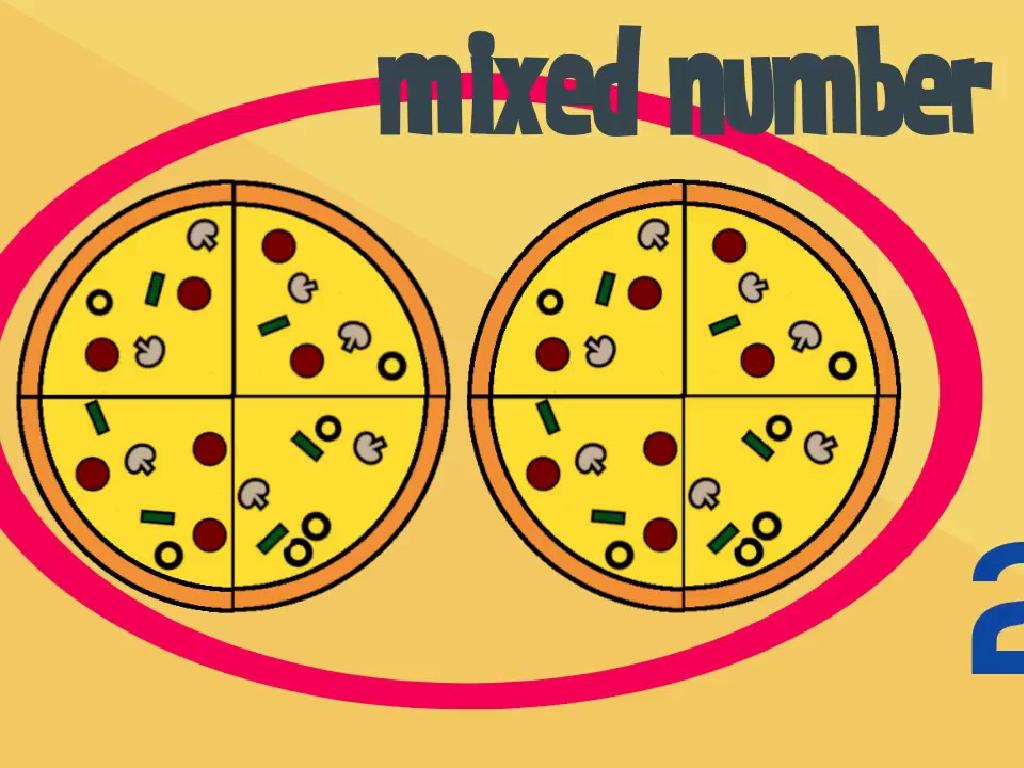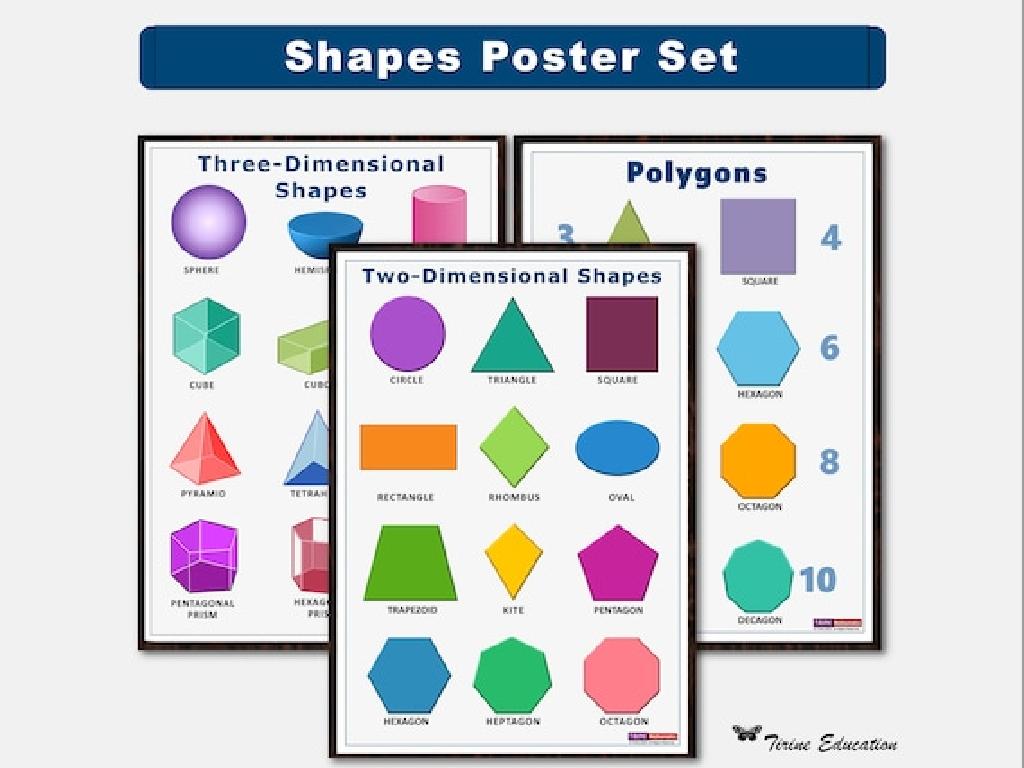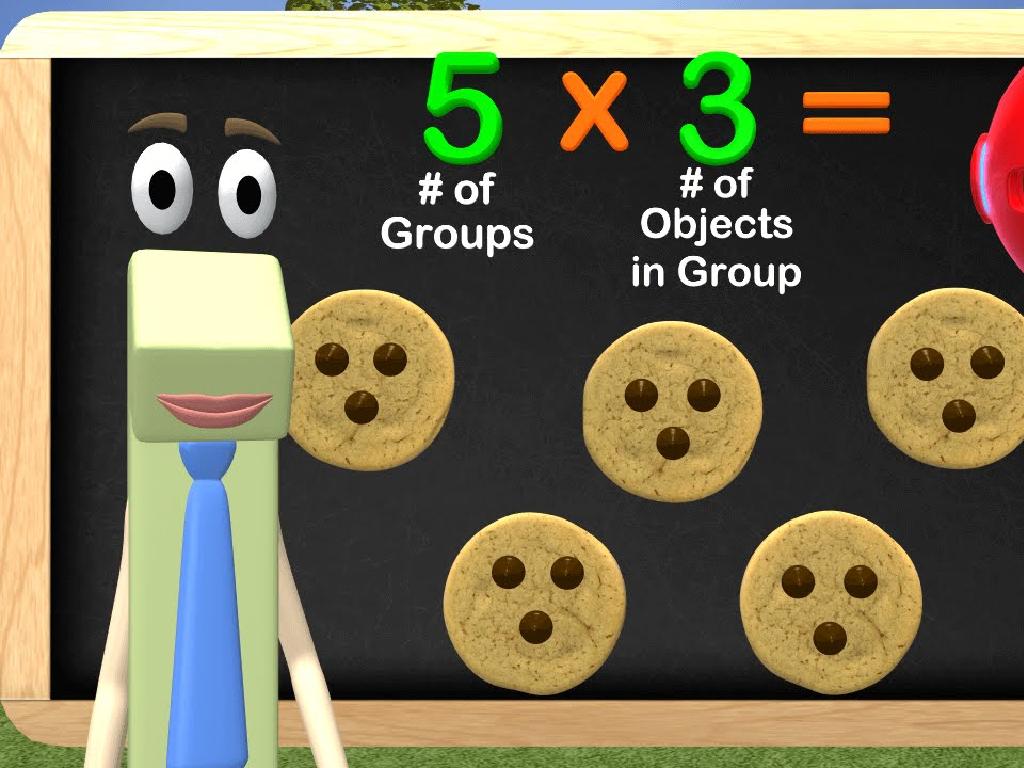Interpret Stem-And-Leaf Plots
Subject: Math
Grade: Fourth grade
Topic: Data And Graphs
Please LOG IN to download the presentation. Access is available to registered users only.
View More Content
Understanding Stem-and-Leaf Plots
– What is a stem-and-leaf plot?
– A type of graph to organize data, showing frequency of numbers.
– Organizing numbers can be fun!
– Uses of stem-and-leaf plots
– They help us see data patterns and compare groups easily.
– Example: Class height data
– If we chart the heights of classmates, we can quickly see who’s tallest!
|
Begin by explaining what a stem-and-leaf plot is, emphasizing that it’s a tool for organizing numerical data in an orderly fashion. Highlight that it’s not just useful, but can also be a fun activity to visualize numbers and their frequency. Discuss the practical uses of stem-and-leaf plots, such as comparing data sets and identifying patterns. Use an example relevant to the students, like charting the heights of classmates, to make the concept more tangible. This will help them understand how to interpret the data from the plot. Encourage students to think of other examples where this type of plot might be useful.
Understanding Stem-and-Leaf Plots
– What is a stem-and-leaf plot?
– A table that organizes data by splitting numbers
– ‘Stem’ and ‘leaf’ explained
– ‘Stem’ is the first part, ‘leaf’ is the last part
– Example: Number 24
– In 24, stem is 2, leaf is 4
– Practice with your own numbers
– Try splitting numbers into stems and leaves
|
Introduce the concept of stem-and-leaf plots by explaining that it is a method of organizing numerical data. Emphasize that the ‘stem’ represents the initial digits of a number, while the ‘leaf’ represents the final digit. Use the number 24 as a clear example, showing that 2 is the stem and 4 is the leaf. Encourage students to practice by choosing numbers and identifying the stems and leaves themselves. This will prepare them for creating their own stem-and-leaf plots and interpreting existing ones. Make sure to provide several examples and to check for understanding before moving on to more complex numbers or plots.
Creating a Stem-and-Leaf Plot
– Find smallest & largest number
– Helps to determine the range of data
– List down all the stems
– Stems are the first part of the number
– Add leaves to the stems
– Leaves are the last digit of the number
– Let’s build one together!
– Use sample data for practice
|
This slide is designed to guide fourth-grade students through the steps of creating a stem-and-leaf plot. Begin by explaining the importance of identifying the range of data, which is done by finding the smallest and largest numbers. Next, show how to list the stems, which represent the leading digits of the numbers in the data set. Then, demonstrate how to write the leaves, the last digits, next to their corresponding stems. Finally, engage the class in a hands-on activity by creating a stem-and-leaf plot together using sample data. This will help solidify their understanding of the concept. Provide clear examples and ensure that each student is following along and participating in the activity.
Reading a Stem-and-Leaf Plot
– Understanding stem-and-leaf plots
– It’s a type of graph to organize numbers, stems are tens and leaves are ones
– Identifying smallest and largest values
– Look at the first and last leaves to find the smallest and largest numbers
– Finding the median
– The median is the middle number when all numbers are in order
– Determining the mode
– Mode is the number that appears most often in the plot
|
This slide aims to teach students the basics of interpreting stem-and-leaf plots. Start by explaining that a stem-and-leaf plot is a way to display data where each number is split into a stem (usually the first digit or digits) and a leaf (usually the last digit). Make sure to clarify that the ‘stem’ represents the larger place value, while the ‘leaf’ represents the smaller place value. Demonstrate how to identify the smallest and largest values by looking at the extremes of the plot. Guide students on how to find the median by counting to the middle value of the ordered data set. Lastly, explain how to determine the mode by identifying which leaf appears most frequently. Provide examples and practice problems to reinforce these concepts.
Why Use Stem-and-Leaf Plots?
– Organize data swiftly
– Like sorting numbers in a list, but quicker!
– Find range, median, and mode
– Range shows data spread, median is the middle, mode is most frequent
– Compare data sets easily
– Look at two plots side by side to see differences
|
Stem-and-leaf plots are a great tool for organizing numerical data in an easy-to-read format. They allow students to quickly sort and visualize the data, making it simpler to find the range (difference between the largest and smallest numbers), median (the middle value), and mode (the most frequently occurring number). These plots are particularly useful when comparing different sets of data because they clearly show variations in data distribution. During the lesson, demonstrate how to create a stem-and-leaf plot and use examples to find the range, median, and mode. Encourage students to practice by comparing plots from different data sets to reinforce their understanding.
Example Time: Class Height Analysis
– Examining class height data
– Determining the range of heights
– Range is the difference between tallest and shortest student
– Observing patterns in data
– Look for clusters or gaps in the heights
– Discussing findings together
|
This slide is designed to provide a practical example of how to interpret stem-and-leaf plots by using a relatable dataset: the heights of students in the class. Begin by showing a stem-and-leaf plot of the class’s heights. Guide the students to identify the smallest and largest values to find the range. Discuss how to interpret the plot to find patterns, such as the most common height range or if there are any outliers. Encourage students to participate by asking questions about what they observe. This interactive discussion will help solidify their understanding of how to read and interpret stem-and-leaf plots.
Class Activity: Create Your Stem-and-Leaf Plot!
– Collect your reading data
– Write down books read last month
– Organize data into a plot
– List stems as tens and leaves as ones
– Share your plot with the class
– Explain your plot to classmates
|
This activity is designed to provide hands-on experience with stem-and-leaf plots. Start by having each student write down the number of books they read in the past month. Then, guide them to organize this data into a stem-and-leaf plot, with the ‘stem’ representing the tens place and the ‘leaf’ representing the ones place of the numbers. Once completed, encourage students to share their plots with the class and explain what their data shows. This will help them understand how to interpret and create their own stem-and-leaf plots. Possible variations of the activity could include using different data sets, such as the number of steps walked in a day or points scored in a game.
Review: Stem-and-Leaf Plots
– Recap on stem-and-leaf plots
– A way to organize data showing frequency
– Importance of stem-and-leaf plots
– They help us see data patterns easily
– Open floor for questions
– Share your own examples
– Maybe you saw a pattern in your favorite game’s scores?
|
This slide is meant to consolidate the students’ understanding of stem-and-leaf plots. Begin by reviewing the concept and how it helps organize numerical data in an orderly fashion, with ‘stems’ representing the first digit(s) and ‘leaves’ representing the last digit. Emphasize the importance of these plots in identifying data patterns and trends quickly, which is a valuable skill in both math and daily life. Open the floor for any questions to clarify doubts. Finally, encourage students to share their own examples or experiences where they might have encountered similar data organization, perhaps in games or while keeping track of sports scores, to make the concept more relatable and engaging.
Conclusion & Homework: Stem-and-Leaf Plots
– Excellent work in today’s lesson!
– Homework: Create your own plot
– Find data like daily temperatures or game scores
– Collect a data set
– Use the data to make a stem-and-leaf plot
– Present your plot tomorrow
|
Today’s class focused on understanding stem-and-leaf plots, and the students did a great job. For homework, they are tasked with applying what they’ve learned by collecting a set of real-world data and creating their own stem-and-leaf plot. This could be data like daily temperatures, points scored in sports games, or any other numerical data they find interesting. Encourage creativity and ensure they understand how to organize the data into stems and leaves. Tomorrow, each student will have the opportunity to present their plot to the class, which will help reinforce their understanding and allow them to see a variety of examples from their peers.





